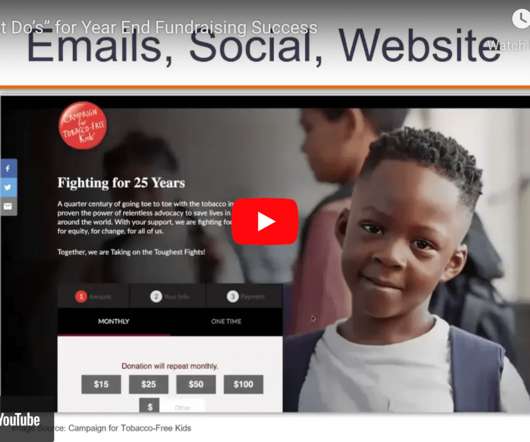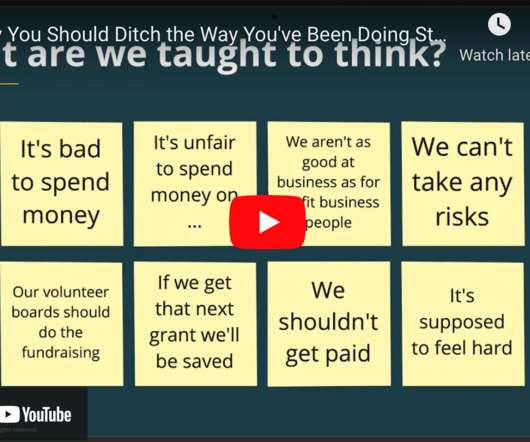How Nonprofit Professionals Can Manage Workplace Stress Triggers
Beth's Blog: How Nonprofits Can Use Social Media
JUNE 22, 2017
Anne Grady, in a recent HBR blog post , describes the harm that repeated stress triggers can create in the workplace: “When you are triggered, the emotional part of your brain takes over. Your logical brain temporarily shuts down, and you lose the ability to solve problems, make decisions, and think rationally.





















Let's personalize your content